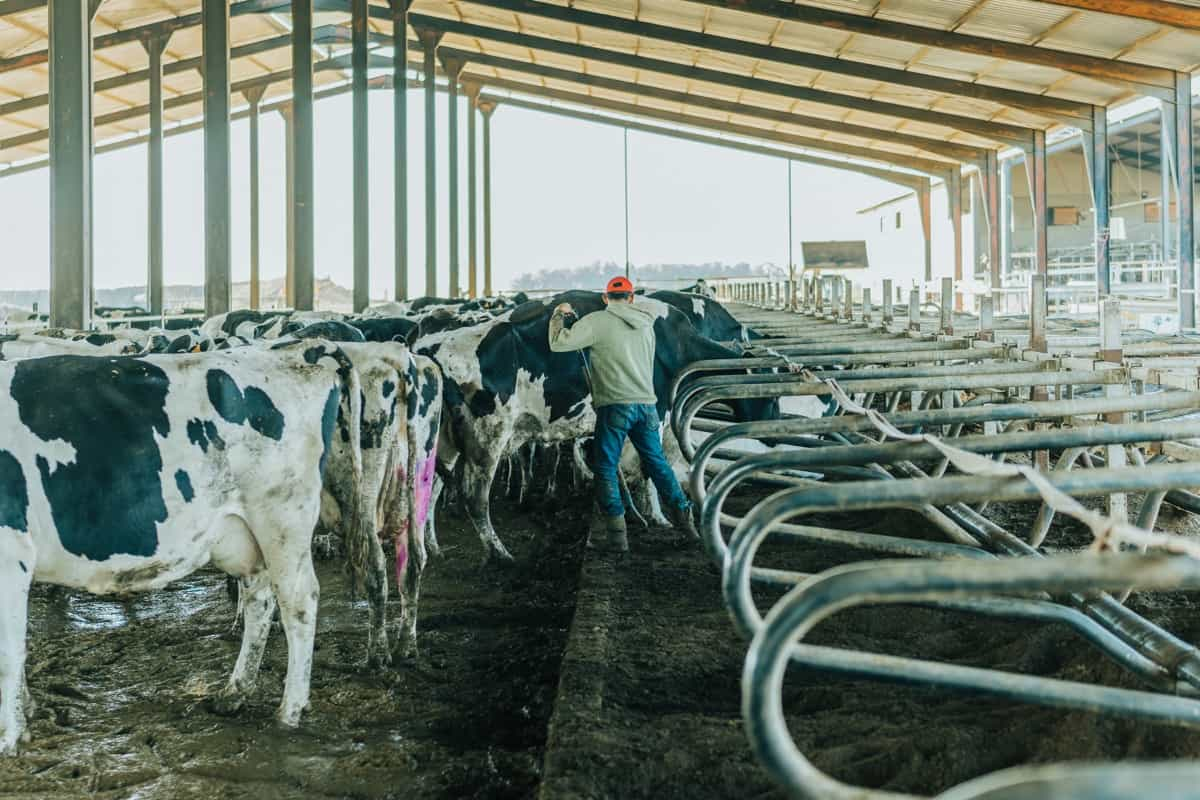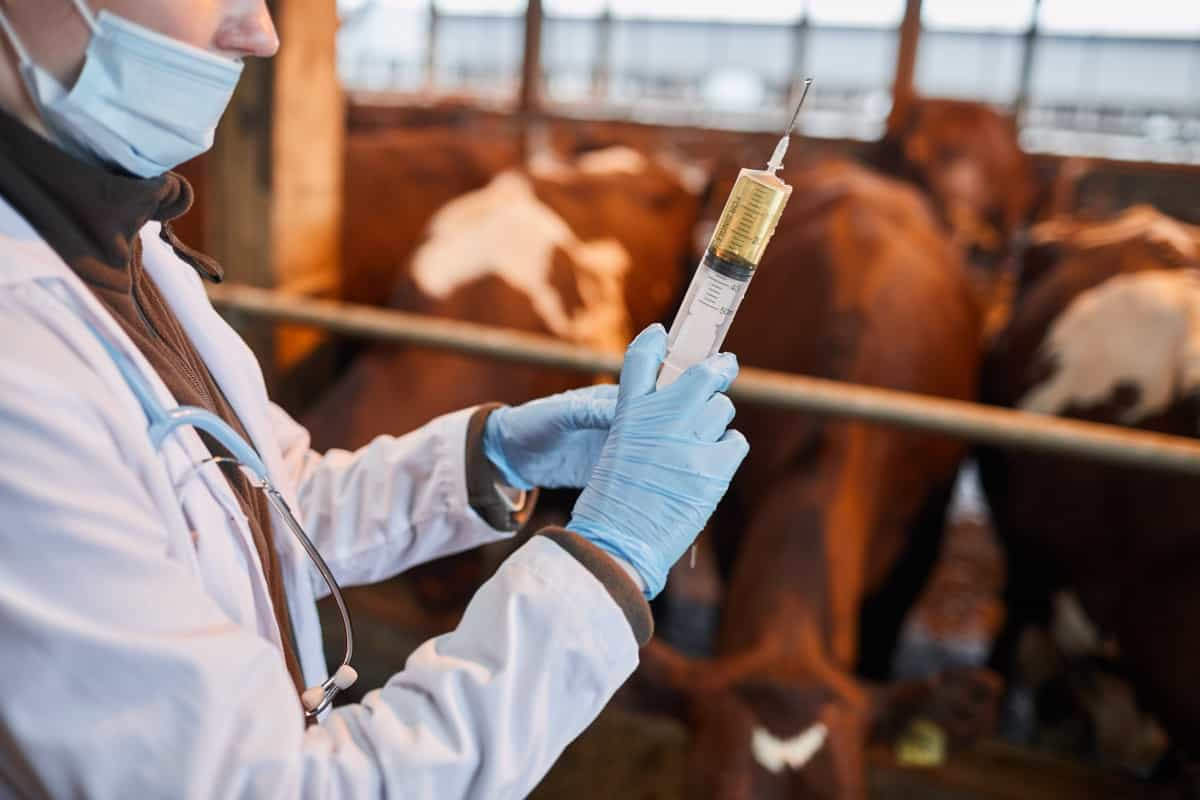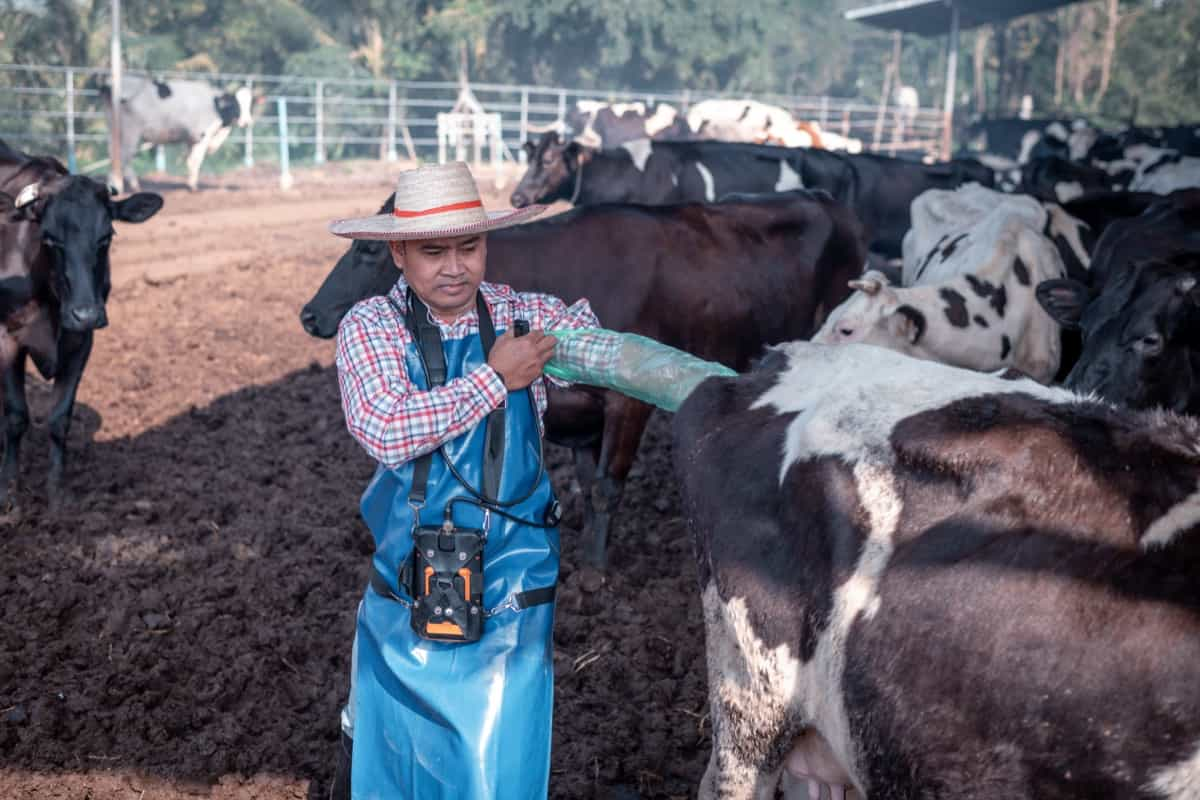Like any other animal, cattle can be affected by various health issues affecting their overall well-being. Like other living beings, cattle are prone to various health problems. These issues not only affect their overall well-being but also impact their productivity and quality of life. Farmers and ranchers must be aware of these common health problems to prevent and treat them effectively.

Common Health Problems in Cattle
Respiratory Diseases in Cattle
Respiratory diseases in cattle can significantly impact their overall health and productivity. The common respiratory disease in cattle is bovine respiratory disease (BRD). It is often caused by stress, overcrowding, poor ventilation, and exposure to viruses or bacteria. Another respiratory condition is infectious bovine rhinotracheitis (IBR), which is caused by the herpes virus and can result in fever, runny nose, and pneumonia.
Preventing respiratory diseases involves implementing good management practices, such as providing adequate ventilation and reducing animal stress levels. Vaccination programs are also crucial in protecting against certain viral infections that can lead to respiratory issues.
Reproductive Disorders in Cattle
Reproductive disorders can affect both male and female cattle, leading to reduced fertility rates and difficulties in breeding. One common reproductive disorder in cattle is infertility. This can be caused by various factors such as hormonal imbalances, infections, genetic abnormalities, or nutritional deficiencies. Another reproductive disorder is abortion or early embryonic death.
This can occur due to infectious diseases like brucellosis or bovine viral diarrhea virus (BVDV), as well as environmental factors like poor nutrition or exposure to toxins. Preventing reproductive disorders in cattle involves maintaining optimal nutrition for cows throughout their lifecycle, implementing regular vaccination programs against infectious diseases, practicing good hygiene during calving, and ensuring proper mating practices are followed.
Metabolic Disorders in Cattle
These disorders occur when there is an imbalance or dysfunction in the metabolic processes of the animal’s body. While several types of metabolic disorders can affect cattle, some common ones include ketosis, milk fever, and acidosis. Ketosis is a condition where cows experience an energy deficit during early lactation. On the other hand, milk fever occurs around calving time and is characterized by low blood calcium levels.
In case you missed it: Bovine Ephemeral Fever Management in Cattle: Disease Symptoms, Treatment, Prevention, and Management

Acidosis refers to a condition where there is an excessive accumulation of acids in the rumen due to rapid fermentation of carbohydrates. These metabolic disorders can cause various symptoms, such as reduced appetite, weight loss, decreased milk production, reproductive issues, lameness, and even death if left untreated. Prevention measures, including proper nutrition management and monitoring cow health regularly, are crucial in mitigating these conditions.
Parasitic Infections in Cattle
These parasites can invade various body parts, causing discomfort and affecting the animal’s productivity. The most prevalent parasitic infection in cattle is internal parasites, such as worms. External parasites like ticks and lice also pose significant problems for cattle. They cause irritation and itching, leading to restlessness and reduced grazing time. Additionally, they may transmit diseases that further compromise the animal’s health.
Prevention is crucial to managing parasitic infections in cattle. Regular deworming programs should be implemented to control internal parasites effectively. Proper pasture management practices can also help reduce exposure to external parasites. Regular monitoring of your herd’s health is essential for early detection of any signs of parasitic infections.
Digestive Disorders in Cattle
One common digestive disorder in cattle is bloat. Bloat occurs when gas accumulates in the rumen, causing distention and discomfort. Another issue is acidosis, which happens when there is an imbalance in the pH levels of the rumen due to excessive grain consumption. Other digestive disorders include colic, diarrhea, and constipation.
These can cause pain and discomfort for the animals while affecting their productivity. Prevention plays a vital role in managing these disorders. Providing a balanced diet with proper nutrition helps maintain a healthy digestive system.
Musculoskeletal Issues in Cattle
One common musculoskeletal issue in cattle is lameness. Various factors, such as injuries from slips or falls, foot rot infections, or improper hoof trimming, can cause this condition. Lameness can greatly reduce a cow’s ability to move and graze properly. Another musculoskeletal problem that affects cattle is arthritis. Arthritis causes inflammation and degeneration of the joints over time. Arthritic cows may experience stiffness, swelling, and difficulty walking.
Prevention plays a crucial role in managing musculoskeletal issues in cattle. Providing clean bedding surfaces with good traction helps prevent slips that could lead to injuries. Regular hoof care routines should be implemented to avoid foot-related problems like foot rot. Early detection is essential to treating musculoskeletal issues in livestock.
Dermatological Conditions in Cattle
One common dermatological condition in cattle is ringworm. This fungal infection can lead to circular patches of hair loss, scaly skin, and itching. Another condition is lice infestation, which can cause severe itching, hair loss, and irritation. Sunburns are also a concern for cattle with lighter-colored or thin-haired coats. Prolonged exposure to sunlight without shade protection can result in painful sunburns in vulnerable areas such as the nose or ears.
In case you missed it: Actinomycosis Management in Cattle: Disease Symptoms, Treatment, Prevention, and Management

Proper hygiene practices should be followed to prevent and manage dermatological conditions in cattle. Regular cleaning of barns or sheds helps reduce the risk of fungal infections like ringworm. In addition, implementing effective parasite control measures through regular deworming can help prevent lice infestations and mange. Maintaining good herd management practices along with prompt identification and treatment of dermatological conditions will go a long way in ensuring the health and well-being of your cattle herd.
Neurological Disorders in Cattle
One common neurological disorder in cattle is bovine spongiform encephalopathy (BSE). This degenerative condition affects the brain and spinal cord, leading to behavioral changes, unsteady gait, muscle tremors, and eventually death. Another notable neurological disorder in cattle is polioencephalomalacia (PEM).
Symptoms may include blindness, head pressing against objects or walls, disorientation, seizures, and even coma. It’s essential to promptly consult a veterinarian if you suspect any neurological issues in your herd. Prevention is essential in reducing the risk of neurological disorders in cattle.
Urogenital Problems in Cattle
While various urogenital problems can occur, some common ones include urinary tract infections, kidney stones, bladder prolapse, and reproductive disorders. Urinary tract infections (UTIs) are not uncommon in cattle and can lead to discomfort and reduced milk production. Kidney stones can cause severe pain and obstruct the urinary tract if left untreated.
Prevention is crucial when it comes to urogenital problems in cattle. Providing clean drinking water, maintaining proper hygiene during calving and breeding seasons, and regular veterinary check-ups for early detection of any abnormalities are essential preventive measures.
Ocular Health Issues in Cattle
The most prevalent ocular health issue in cattle is pink eye. This highly contagious condition causes redness and inflammation of the eyes, leading to discomfort and decreased vision for our four-legged friends. It’s important to address corneal ulcers promptly, as they can be affected by infection if left untreated.
Regular veterinary check-ups are essential to prevent and manage ocular health issues in cattle. Early detection is crucial in preserving their sight and overall well-being. Proper hygiene practices, such as keeping living spaces clean and minimizing dust exposure, can also help reduce the risk of these conditions spreading within herds.
Frequently Asked Questions (FAQ) on Health Problems in Cattle
What Steps Should I Take to Prevent Hoof Problems in My Herd?
Hoof problems like lameness can significantly impact your cattle’s mobility and well-being. Regular hoof trimming ensures proper weight distribution while allowing early detection of any issues. Maintaining dry and clean environments reduces the risk of foot rot or other bacterial infections that thrive in damp conditions.
In case you missed it: Abortion Management In Cattle: Disease Symptoms, Causes, Diagnosis, Treatment, Control, and Prevention

Are There Any Specific Vaccinations Recommended for Cattle?
Yes. Vaccinations are crucial for protecting your herd from various diseases. Common vaccines include those for respiratory diseases like infectious bovine rhinotracheitis (IBR) and bovine viral diarrhea (BVD).
What are the Common Diseases Affecting Cattle?
Cattle can be susceptible to respiratory infections, foot rot, mastitis (udder inflammation), bloat (gas accumulation in the rumen), and parasites like worms.
How Do I Identify Signs of Illness in Cattle?
Changes in behavior or appetite, weight loss, coughing or sneezing, lameness, or reluctance to move may indicate an underlying health issue. Regular observation of your herd is crucial for early detection.
Conclusion
Health problems in cattle can significantly impact their overall well-being and productivity. These issues cause discomfort and pain to the animals and can lead to economic losses for farmers. When cattle are affected by health problems, it can result in reduced milk production, decreased fertility rates, weight loss, poor growth rates, and even death. Recognizing the signs of cattle health problems early on is crucial for prompt treatment and prevention of further complications.
- Types of Fungicides Used in Agriculture
- Common Issues in the Fruit Development Stage of Pomegranate Farming
- Fruit Development Issues in Papaya: Easy Solutions and Treatment
- Soil-Borne Diseases and How to Protect Your Plants
- Practices to Prevent Disease Spread in the Garden
- From Wilted to Thriving: How to Treat Root Rot Naturally in Houseplants
- Natural Remedies to Cure Brown Spots on Fig Tree Leaves
- Natural Solutions for Poinsettia Problems: 100% Effective Remedies
- How to Control Calla Lily Problems: Natural Remedies for Leaf and Flower Problems